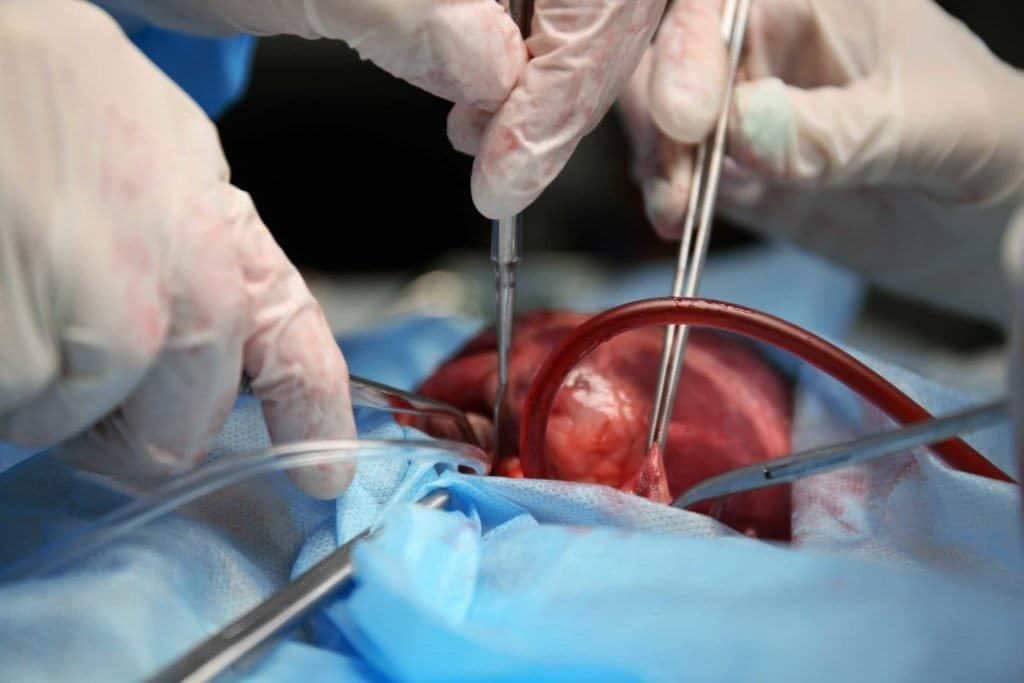Contents:
- Medical Video: Cervical Cancer Symptoms Awareness Video - Claire's Story
- What is cervical cancer?
- What causes cervical cancer?
- Who is at risk for cervical cancer?
- What are the signs and symptoms of cervical cancer?
- What are the complications of cervical cancer?
- How is cervical cancer diagnosed?
- What are the treatments for cervical cancer?
- Operation
- Radiotherapy
- Chemotherapy
- How to treat cervical cancer?
Medical Video: Cervical Cancer Symptoms Awareness Video - Claire's Story
Throughout 2016, an estimated 13,000 cases of invasive cervical cancer were found and 4,000 women will die from cervical cancer in the US. Cervical cancer is one of the main contributors to cancer deaths in the US female population.
What is cervical cancer?
Like most cancers, cervical cancer begins when cells in the cervix begin to grow out of control. New cells develop very quickly, creating tumors in the cervix.
Cervical cancer is one of the most common cancers for women from all over the world. A routine Pap test can help you know your risk of cancer as early as possible. Cervical cancer can often be cured when found early. In addition, there are methods to control the risk of cervical cancer, which is the reason for the decreasing number of cervical cancer cases.
What causes cervical cancer?
Almost all cases of cervical cancer are caused by human papillomavirus or HPV. This virus is often transmitted through unprotected sexual intercourse.
There are more than 100 types of cervical cancer, but most are not dangerous. In fact, most adults have at least been exposed to HPV sometime in their lives. Some types of HPV can cause no symptoms at all, some can cause genital warts, and others can cause cervical cancer. Two types of HPV virus (HPV 16 and HPV 18) are known to be responsible for 70% of all cervical cancer cases globally. This type of HPV infection does not show any symptoms, so many women do not realize that they are positively infected.
HPV can easily be found with a Pap test. That's why Pap tests are also very important to prevent cervical cancer. Pap tests can find differences in cervical cells before turning into cancer. If these cell changes are cured, you can survive against cervical cancer.
Who is at risk for cervical cancer?
Although most people have HPV, there are things that can increase the risk of cervical cancer, including:
- Human papillomavirus infection: Having unprotected sexual intercourse with multiple partners can increase the risk of getting HPV 16 and 18.
- Smoke: Tobacco contains many chemicals that can harm the body. Women who smoke are more than twice the risk of developing cervical cancer than women who don't smoke.
- Immunosuppression: Drugs or conditions that affect the immune system, such as the human immunodeficiency virus (HIV), the virus that causes AIDS, can increase the risk of HPV infection and cause cervical cancer.
- Chlamydia: Some studies have found that the risk of cervical cancer is higher in women whose blood test results show evidence of chlamydial infection, both past and present.
- A diet low in fruits and vegetables: Women whose diets do not consist of enough fruits and vegetables are known to have a higher risk of cervical cancer.
- Overweight: Women who are overweight are more likely to develop cervical adenocarcinoma
- The use of long-term birth control pills: There is evidence that long-term oral contraceptive use increases the risk of cervical cancer.
- Intrauterine use: A recent study found that women who had never used an intrauterine device (an IUD, a contraceptive device implanted into the uterus to prevent pregnancy) had a lower risk of developing cervical cancer.
- Undergoing several full-term pregnancies: Women who have undergone three full-term pregnancies or more will be more at risk for cervical cancer.
- Age less than 17 years during the first pregnancy: Women who are less than 17 years old when undergoing their first full-term pregnancy have a 2-fold chance of developing cervical cancer later in life.
- Low economy: Low economic level prevent women from having full access to adequate health services, including Pap tests.
- Diethylstilbestrol (DES): DES is a hormone drug given to some women to prevent miscarriage. Mothers who use this drug during pregnancy are often more at risk for cervical cancer. Daughter of the mother is also more at risk.
- Have a history of cervical cancer in the family: Cervical cancer can be lowered in some families. If your mother or sister has cervical cancer, your chances of getting the disease are 2 or 3 times greater than if no one has it in the family.
What are the signs and symptoms of cervical cancer?
In the early stages, women with early and pre-cancerous cervical cancer do not experience symptoms. Cervical cancer will not show symptoms before the tumor is formed. At that time, the cancer can be pushed to the nearest organ and attack healthy cells.
Symptoms of cervical cancer can include:
- Abnormal vaginal bleeding, such as bleeding between menstrual cycles, longer menstruation, bleeding after or during sex, or bleeding after menopause, after bowel movements, or after pelvic examination
- Pain in the lower abdomen or pelvis
- Pain during sex
- Abnormal vaginal discharge, such as containing traces of blood
There are other conditions, such as infections, which can cause these symptoms. However, whatever the cause, you still need to check your symptoms to a doctor. Ignoring it will only make the symptoms worse and thus lose your chance to get effective treatment.
Even better, don't wait until symptoms appear. The best way to ensure your genitals are in good condition is to undergo a Pap test and regular pelvic examination.
What are the complications of cervical cancer?
Cervical cancer often causes several complications in other parts of the body. If you have cervical cancer, you may be at risk of developing:
- Kidney failure: Liver cancer tumors can suppress the bladder tract - the channel that carries urine out of the body from the kidneys. Urine buildup in the kidneys can cause kidney failure.
- Blood clots: Tumors can compress blood vessels to the legs, slowing blood flow and causing blood clots in the legs.
- Fistula: Cervical cancer can grow a fistula (a hole in the intestinal wall) between the vagina and rectum.
How is cervical cancer diagnosed?
Doctors usually use a Pap test to diagnose cervical cancer. Your doctor can do other tests to look for pre-cancerous cells or cancer cells in your cervix if the Pap test shows cell changes that don't work like a biopsy.
The doctor can refer you to an obstetrician if the test shows abnormalities, or if he is aware of growth in your cervix or if you experience abnormal bleeding.
It should be noted that in-and-vaginal bleeding does not always mean cervical cancer. Chlamydia is one of the most common reasons why women experience unusual vaginal bleeding. Your doctor can advise you to take the Chlamydia test before being referred.
Some other tests that may be needed to confirm that you have cervical cancer are:
- Colposcopy: A small microscope with a colposcope is used to examine your cervix.
- Conical spine: This small procedure is performed in analgesia. One small cone-shaped part of your cervix will be removed for examination. After that, you may experience vaginal bleeding for up to four weeks after the procedure. You may also experience menstrual pain.
When the doctor believes that you have cervical cancer, the next thing he will do is check how severe the cancer is. This test can include:
- Check your uterus, vagina, rectum, and bladder for cancer. This procedure is performed in analgesia.
- Blood test to check the condition of surrounding organs such as bone, blood, and kidneys.
- Computerized tomography (CT) scans, Magnetic resonance imaging (MRI) scans, x-rays and Positive emission tomography (PET) scans are called imaging tests. Imaging tests are designed to identify tumors and determine whether cancer cells have spread.
What are the treatments for cervical cancer?
Treatment for cervical cancer is complex. Therefore, the hospital will form a team of professionals who are experts in treating early stage cervical cancer and advanced cervical cancer. Even though it is ideally to treat cervical cancer at an early stage, it is usually not immediately diagnosed.
In general, there are three main choices for the treatment of cervical cancer: surgery, radiotherapy, and chemotherapy.
Operation
This treatment will remove every part infected by cancer. You together with the medical team must work together for the best treatment.
- Radical tracelectomy: the cervix, surrounding tissue and the upper part of the vagina are removed, but the uterus is left intact.
- Hysterectomy: the cervix and uterus are removed, depending on the stage of the cancer, it may also be needed to remove the ovary and fallopian tubes. You will not be able to have children if you have a hysterectomy.
- Exenteration of the pelvis: a major operation in which the cervix, vagina, uterus, bladder, ovary, fallopian tubes and rectum are removed.
Radiotherapy
In the early stages of cervical cancer, you will be treated with radiotherapy alone or in combination with surgery. Then, when the cancer reaches an advanced stage, doctors can recommend radiotherapy combined with chemotherapy to reduce bleeding and pain for patients.
In this treatment, your body will be exposed to radiation. The radiation source can be external, where there is a machine that emits radiation to you, or internally. In this internal method, an implant will be implanted in your body to emit radiation. There are cases where both methods will be combined. The radiotherapy program usually lasts for five to eight weeks.
Chemotherapy
Chemotherapy can be used independently or in combination with radiotherapy to treat cervical cancer. In advanced cancer, this method is often used to prevent cancer from developing. Anga must make an appointment to get your chemotherapy dose through intravenous droplets.
All cervical cancer treatments can have side effects. You should discuss with the doctor first about these side effects. You can predict the occurrence of early menopause, vaginal narrowing or lymphedema after treatment.
How to treat cervical cancer?
Having cancer can be a difficult challenge for you to live alone. Sharing with family, friends, or professional mental counselors can be very helpful and better if you ask a doctor about a support group.
A Pap test is the best way to find changes in cervical or HPV cells in your cervix. It is important to follow up with your doctor after getting an abnormal Pap test result so that you can get treatment on time.
If you are less than 26 years old, you can get the HPV vaccine, which will provide protection against two types of HPV 16 and HPV 18, two types of HPV that can cause cervical cancer.
Avoid getting infected with HPV by having safe sex, such as by using a condom and limiting your sex partner.
Knowing that you have cancer can change your life. You may feel that your world has been destroyed and you have lost all control. Even so, cervical cancer can be treated. If you are aware of any signs that might lead to cervical cancer, immediately consult a doctor.












